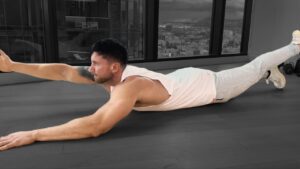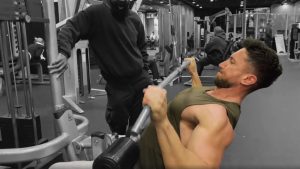Decline crunches are a simple variation that only requires a decline bench or a little creativity and most people with decent core strength can effectively include it in their workout regime. Better still, having a strong core also prevents lower back pain and allows you to train with progressively heavier weights without worrying about injury.
A decline crunch is a simple, effective ab exercise that can be used to build muscle mass. It is similar to a standard crunch, but it recruits the upper abs and the obliques to a greater extent, which provides more of a challenge and therefore encourages growth. In this article, we will cover the benefits of doing decline crunches and how to do them correctly.
How To Perform Decline Crunches
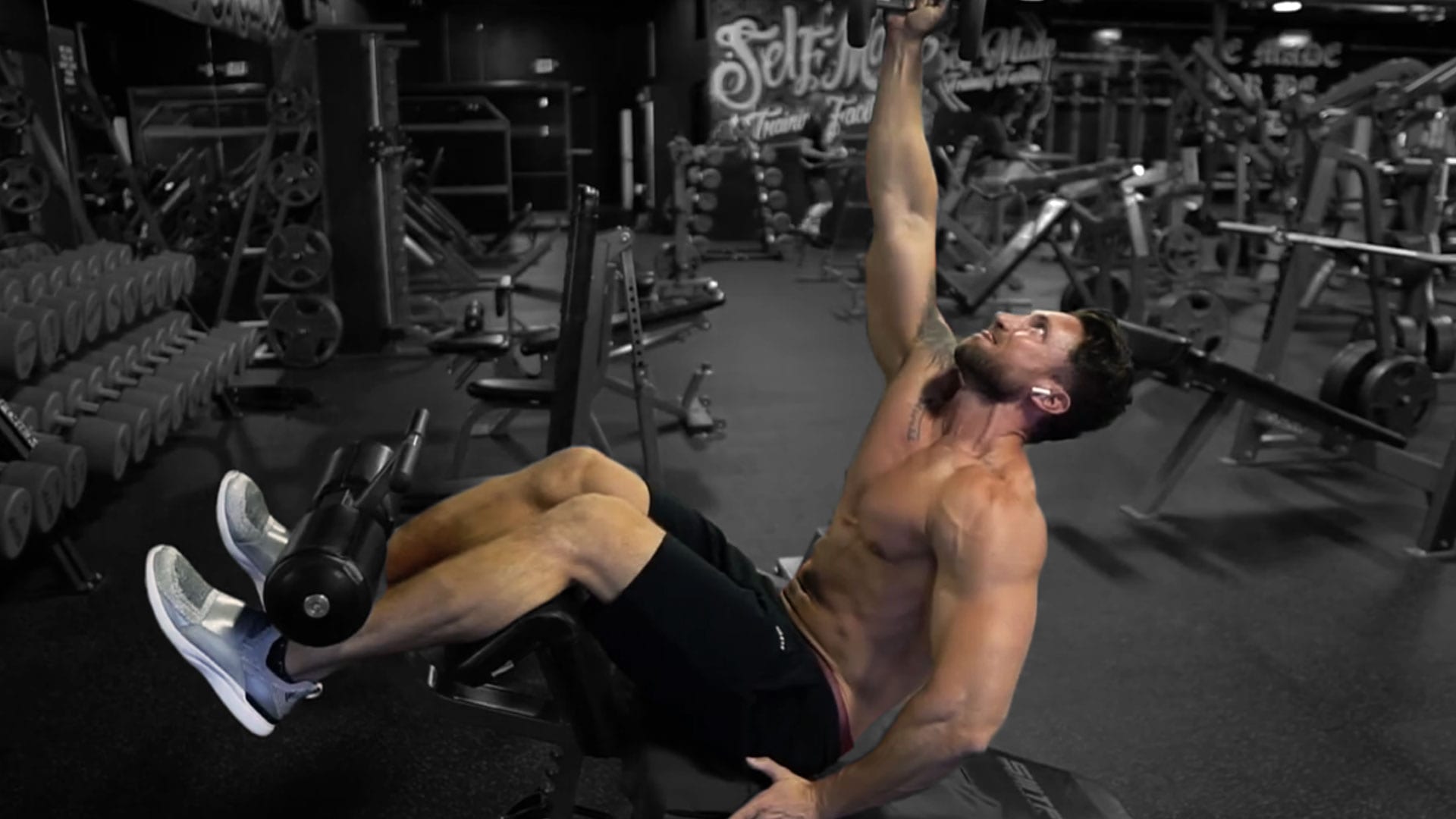
With the decline bench, get into position and secure your legs. Place your hands on either side of your head, keeping your elbows in. Push the small of your back down into the decline bench and start to roll your shoulders off it.
Bend your elbows so that you can push down forcefully with your lower back while you contract your abdominals. Exhale as you do so. Your shoulders should only lift off the bench for approximately 4 inches.
Keep your lower back on the bench. Hold the contraction for a second. Then, start to come down slowly to the starting point. Inhale as you do so. Repeat for the desired number of reps.
Tips For The Perfect Decline Crunch
The thing to remember about crunches is that they’re not the answer to an amazing core. You see, your core is made up of your transverse abdominis and your rectus abdominis. The crunch targets only the rectus abdominis and not the transverse abdominis.
When doing decline crunches, instead of locking the fingers, place them gently on either side of the head. It’s important to keep the neck in a neutral position and not to over-stretch the head and neck.
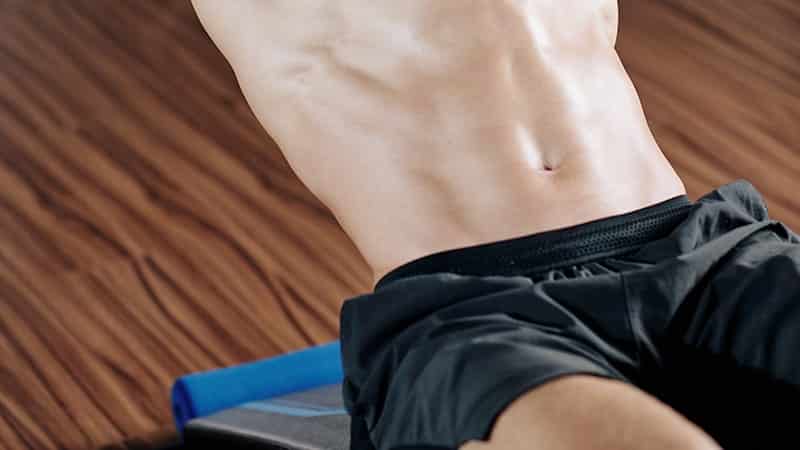
The key to safely doing the decline crunch exercise is to keep your movements slow and controlled. You want to avoid jerking your head and neck up or down. You want to do this exercise in a slow and controlled manner to avoid injury.
You can adjust the decline angle of the bench to increase or decrease the difficulty of the decline crunch. As you decrease the angle of the decline bench, you increase the difficulty of the exercise: for a tougher situp, find a more acute angle. For a less difficult situp, find a more shallow angle.
Decline Crunches Vs. Decline Situps
Decline crunches and decline situps both develop core strength, but for slightly different reasons. Decline situps work the rectus abdominis more, while decline crunches target the six-pack muscle. Doing both will help you gain toned abs.
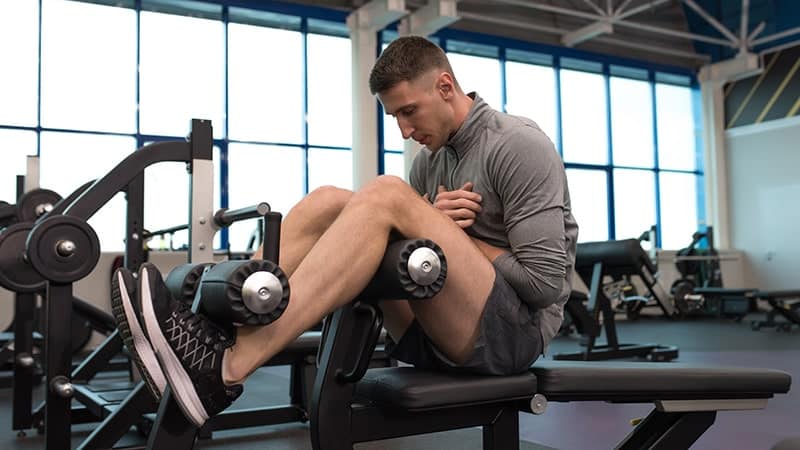
Doing situps or squats alone won't yield the best results — you need to work more muscle groups, especially when working your core. You can focus on one exercise if there are specific results you'd like to achieve or if your body responds better to one over the other.
Either way, mixing situps, crunches, and squats will yield the best results. The decline crunch and other variations will help you hit even more muscles!
Benefits Of Decline Crunches
The decline crunch is a better way to target the abs than other abdominal exercises. The decline crunch uses the abs to push the body off the bench and results in maximum contraction, so those who have become proficient in decline sit-ups can add some extra weights to maintain the difficulty level.

A strong core isn't only good for aesthetics. In fact, it's the key to a healthy spine and good posture. Abdominal muscles provide support for your spine, and strong abs can also help manage or reduce back pain. Couple that with robust abdominal muscles, and you're ready to take on whatever life throws at you.
Pitfalls To Avoid
Decline crunches are an effective, time-efficient way to strengthen and tone your muscles. But, if done improperly, they can result in the exact opposite effect — leaving you with a weakened core, pulled muscle, or even a hernia.
However, you can reduce the chance of injury by understanding proper form when performing this exercise.
Don't Strain Your Neck

Like any core exercise, it's important to execute a decline crunch the right way. When you sit up from a lying position, try to avoid yanking your neck with your hands or rocking your hips back and forth rapidly. You want to go slow and steady — no jerking or jolting allowed!
Follow Through Completely

If you stop halfway through the crunch, you're missing out on the full benefit of the exercise — and possibly hurting your back. To get the full benefits of this exercise, you have to do it all the way through, from top to bottom.
This means keeping your core engaged as you crunch up to sitting up, and keeping it engaged as your lower back hits the floor. To complete each rep properly, time your breaths with each part of the movement.
Use Your Breathing
Don't just do crunches. Crunch and breathe. When you crunch up, don't just focus on the upward movement. Your body will naturally fall back down to the mat when you're not holding tension in your muscles. Follow through on the move by keeping your abs engaged for the entire duration of the exercise so that your core becomes stronger with each rep.
Control Your Motion
As you increase the speed of your decline crunch movements, your core will naturally pick up speed, as well. However, to avoid injury and to get the most out of your ab workout, it's important that you maintain control of — and slow down — each individual motion. Instead of focusing on how many crunches you can do, practice maintaining steady, small motions with your core.
If you’re doing this exercise in the gym, you might be tempted to use momentum to bring your knees up to your chest, but this isn’t the right way to do it. You’re better off keeping your legs straight and trying to use your abs to bring your knees up.


